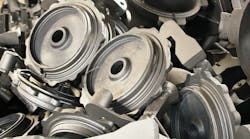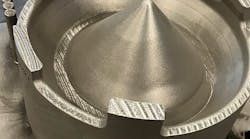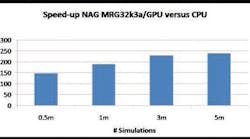Metallurgists who work with applied thermodynamics and other data-intensive metallurgical studies now have access to updated numeric routines for graphical processing units (GPUs), thanks to the Numerical Algorithms Group (NAG). The new routines are particularly helpful for metallurgists using Monte Carlo methods to compute results from random samples.
NAG, of Oxford, England, is not-for-profit numerical software development organization that collaborates with researchers and industrial engineers worldwide. The latest release of NAG’s code for GPUs contains routines for Monte Carlo simulations — quasi and pseudo random number generators, Brownian bridge, and associated statistical distributions. More information is available at www.nag.com/numeric/GPUs.
Originally, general purpose GPUs were used on personal computers for 3D gaming acceleration, but recently they have emerged as effective devices for numerical and scientific computation. Monte Carlo simulations are used in a wide array of technical computing applications in areas like finance, engineering simulations, pharmaceutical development, scientific research, oil and gas exploration, and more.
Andrew Cresci, general manager of vertical marketing for NAG member NVIDIA, comments: “The ecosystem around GPU computing is growing rapidly and NAG’s additions to their routines for GPU computing could not be more timely. NAG’s numerical libraries are renowned for delivering top performance while maintaining the highest standards of accuracy. There are now some 60,000 active CUDA developers, and providing access to trusted algorithms from NAG is a major milestone that enhances the maturity of NVIDIA’s GPU computing architecture.”
NAG’s numerical routines for GPU computing are available to researchers involved in collaborative research with the NAG organization. Commercial organizations also may access NAG’s GPU code and programming services by contacting the local NAG office).










